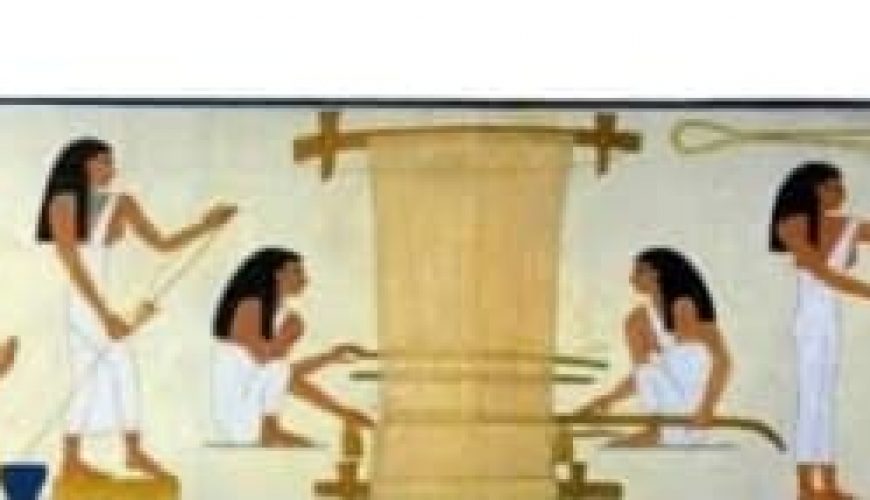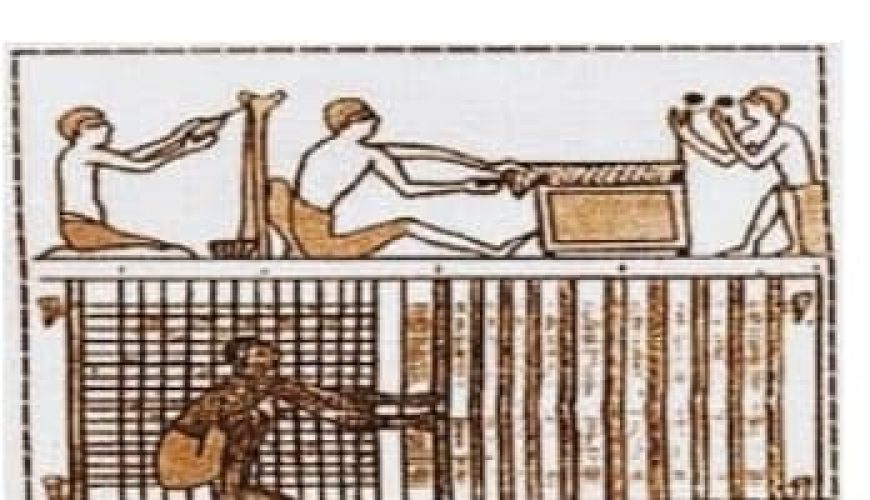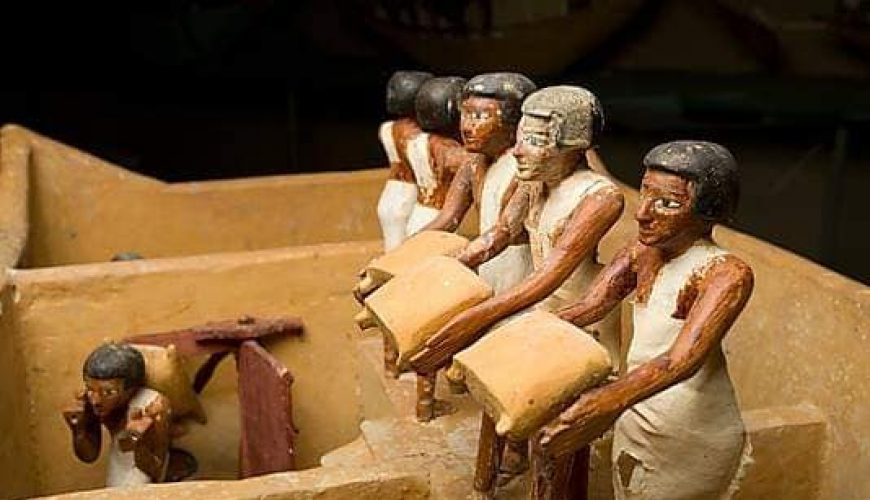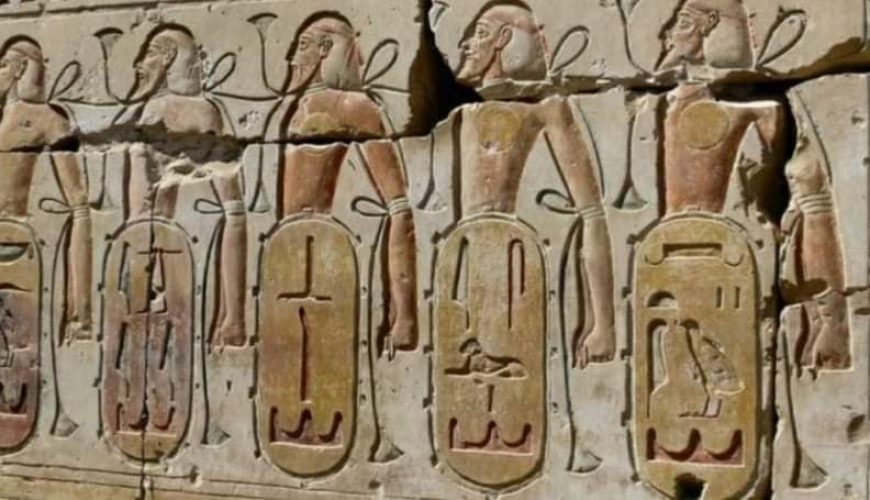The industry in ancient Egypt
Baskets, ropes, textile industry, brick industry, building materials, and pottery.
Making mats, baskets and ropes:
This is one of the ancient industries practised by the ancient Egyptians; The mats were made of different plant fibres, palm fronds, reeds and allies, and were dragons with different decorations and geometric shapes.
They were used to cover the floor, sofas and chairs, and sometimes as curtains for doors and windows.
As for the manufacture of baskets, most of them are made of palm fronds, and they are also decorated with colourful decorations and are of different sizes. The ropes were made from the plant allies, flax and palm fibres.
Textile industry:
The first textiles were linen, then wool, silk and cotton fabric appeared. The method of weaving linen, for example, was done by combing, blanching, hammering, twisting and spinning the linen, and the fibres were stretched into pegs on the ground in parallel. Then the vertical fibres were woven over them by the weavers using two timbers for this purpose.
Then the vertical combs supported by two pillars appeared on the ground, and the women were making textiles as skillfully as the men. Ancient Egypt did not know the weaving of wool, silk and cotton except in late ages such as the Hellenistic period and beyond.
In the era of the First Dynasty, brown linen cloth was found in Tarkhan. This colour may have been due to the passage of time because information confirms that the use of colours began since the Third Dynasty, and dyes for clothes were based on ocher (clay consisting of iron oxide). or rust) and when heated.
It turns yellow or is based on vegetable dyes. The clothes were dyed by soaking completely or by staining. The colour is distributed in regular and irregular spots on the dress using clay, clay, or honey. There was a third method of dyeing called double dyeing, in which clothes were dyed in a specific colour and then dyed in another colour to the outside in a different third colour.
Industry in ancient Egypt, the manufacture of milk, bricks, and construction:
Houses were built with mud, brick or raw brick consisting of clay and a little sand or straw to make it cohesive. . Red or burnt milk was not used in ancient Egypt except in the Roman era.
The milk industry was associated with the brick and masonry industry.
Pottery:
Pottery is made of both types of silt (dark and light) or (brown and grey), and clay dough is prepared, and a little hay may be added to it to make it cohesive, then it is formed by hand or in a pottery wheel, then dried and then burned in ovens of wood, straw and wicker. And sometimes, the vessels are polished before drying with soft, hard stone, and colours, decorations, inscriptions, braids, and others are used.
Stoneware and stoneware industry:
It is one of the oldest industries, and it was carved from hard stone or alabaster or small stones such as diorite, schist and sandstone, and pots were perforated with drills with a metalhead.
We must not forget the merit of this industry and its craftsmen in making the stones from which the pyramids were built and the stones of columns, obelisks, statues, and others. The utensils were widely used in homes for various purposes such as storage, grinding, cooking and others.





Comment (0)